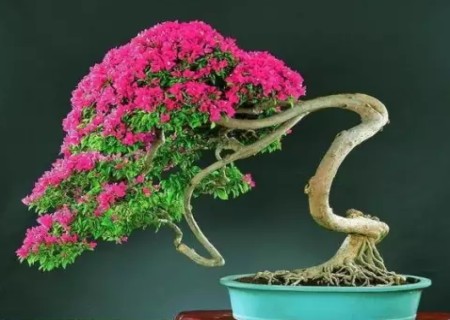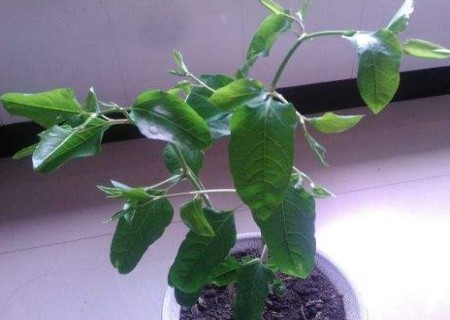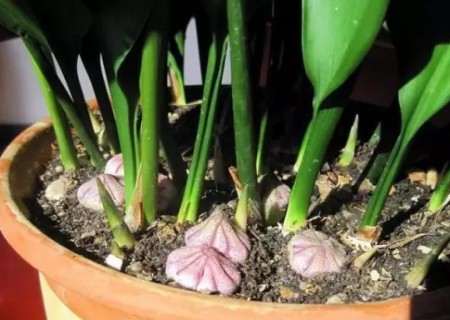Modeling technology of triangular plum / leaf flower bonsai
Triangular plum (that is, leaf flower) flower bracts are large, colorful as flowers, and last for a long time, planted in Yiting garden or pot ornamental. It can also be used for bonsai, hedges and trimming. Triangular plum is of high ornamental value and is used as a wall for climbing flower cultivation in southern China. Every Spring Festival, green leaves set off bright red bracts, as if the peacock opened the screen, particularly dazzling. The northern potted plant stands out at the entrance to the porch, courtyard and hall.
The shape of the triangular plum bonsai is mainly trimmed and supplemented by binding. Young trees can be banded according to their modeling needs. You can also find out several triangular plums of different colors and varieties, and then plant them together.
Wait until the triangular plum grows gradually, and the basic shape has been determined, then untie the triangular plum. And we need to peel off the outer skin of the branch junction and then align it with the cambium. After the connection, it is still necessary to tie both sides tightly, and at the same time, we should pay attention to the wound to prevent rain and watering, so as not to affect the normal growth of triangular plum. After growing firmly and forming an integral whole, remove the binding line.

After the connection, the root under the connecting part can be regarded as the root of the triangular plum, and the root can be shaped according to its own needs, or it can be matched with stone to create a stone-holding effect. By connecting the above parts to grow a lot of branches, at this time we need to trim the plum, pruning at the same time should also pay attention to whether there is a deviation from their own shape.
1. Pick the heart and hit the top
The shape of triangular plum should be grasped from the seedlings, given proper watering, supplemented with foliar nitrogen fertilizer can promote the thickening of the branches of triangular plum. By controlling the apical dominance, we can promote the sprouting of the lower part of the plant, control the excessive growth of branches, and accelerate the growth of lateral branches to achieve the purpose of modeling.
According to the modeling needs, the timing of topping and heart-picking was determined in the growth period of triangular plum, and the heart-picking position was determined according to the height of the plant. Generally speaking, 4-6 leaves of stem tip can be removed and topped, and the 6-leaf stage of new bud branches will remove 2 leaves and leave 4 leaves. After the lateral buds are strong, 1-2 leaves will be removed and 2-3 leaves will be left. After picking the heart several times, the branch changed from one to two, from two to four, until it developed into the desired shape of the crown. In addition, the buds that do not need to leave branches are removed to reduce the consumption of nutrients and speed up the formation of culture.
2. Support shaping
The shape of triangular plum bonsai can be properly bundled and supported according to the actual needs.
The flat binding should be carried out in time with the growth of the branches, and the flat binding should be started immediately after the planting resumes. The aluminum wire with diameter 0.6mm is used from the bottom to the top, from the trunk to the tender branches, so as to promote the elongation between the tender branches and form a natural broken branch. The thicker aluminum wire can also be bundled with the twigs with plastic bandage and then bent. When the branches grow too long, they should be properly cut and pruned in time to promote re-branching and cut off redundant branches such as overlapping branches at the same time.
In order to maintain the shape, a small bamboo pole can be inserted into the basin and the branches of triangular plum can be gently fixed on the bamboo pole with aluminum wire. In addition, the growth of apical dominance can be controlled by technical measures such as bending and pulling branches, so as to make the plant develop according to the desired plant shape. Plants must be given sufficient sunlight in modeling to avoid problems such as weak branch growth, lighter leaf color, leaf shedding and non-flowering.
3. Pruning skills
Due to the vigorous growth, trimmed plum needs to be fully trimmed at least once a year. Before pruning from February to March, according to the principle of pruning the inner bore branch first and then the outer branch, remove the reverse branch, weak drooping branch, inner bore branch, overgrown branch, withered branch, overlapping branch, shade branch and interference branch and so on. When the branches are too dense, leave thicker branches and cut them short, leaving room for new branches to grow and space for flowering and extension.
Pruning should be cut off from the base of the branch, leaving no stumps. Generally speaking, the thicker the pruned branches, the stronger the sprouting. On the contrary, the new buds from thin and weak branches are often weak and weak. During the period of growing branches, enough fertilizer should be applied to facilitate the healthy growth of branches. However, it is not easy to apply too much fertilizer, otherwise it is easy to sprout and grow branches, which can be controlled by controlling moisture. It is found that the overgrown branches need to be cut short, but it is necessary to ensure that the crown branches are evenly distributed and not partial to the crown.
After the formation of the basic crown, it should be often trimmed, cut off the branches that are not conducive to modeling, and truncate the branches to promote sprouting. The twigs in front of weakening branches, shade branches, flowering branches and long branches should be cut back from November to February before germination. The ideal effect of the modeled plant is achieved.
Note:
1. The idea of triangular plum bonsai modeling should be clear in mind.
2. When pruning, one thing we need to pay attention to is to do it according to the overall image we have determined before. if we want to cut it blindly, we must not do it blindly, otherwise, we will probably get half the result with twice the effort.
3. The remaining branches after pruning are not useless. We can use them for flat binding. In addition, due to the passage of time, the following parts will form a new trunk, the surface is rough, more vigorous and simple.
Time: 2019-06-09 Click:
- Prev

How to reproduce Paeonia lactiflora
Paeonia lactiflora has a wide range of uses, the most important of which is to be used as open-ground perennial flowers. Because it has the characteristics of color, fragrance and rhyme, Chinese classical gardens are often decorated with peony planted in rockery trees. Paeonia lactiflora not only can be planted in the ground, but also can be used as a material for potted and cut flowers. When the flowers bloom, pick a few.
- Next

How to propagate one-leaf orchid-the method of ramet propagation
The leaf orchid is evergreen all the year round, the leaf shape is straight and straight, the leaf color is dark green and bright, the posture is graceful, elegant and elegant. At the same time, it has strong growth, strong adaptability and strong shade tolerance, so it is an excellent shade-loving foliage plant for indoor greening decoration. Suitable for home and office layout, can be watched alone
Related
- Fuxing push coffee new agricultural production and marketing class: lack of small-scale processing plants
- Jujube rice field leisure farm deep ploughing Yilan for five years to create a space for organic food and play
- Nongyu Farm-A trial of organic papaya for brave women with advanced technology
- Four points for attention in the prevention and control of diseases and insect pests of edible fungi
- How to add nutrient solution to Edible Fungi
- Is there any good way to control edible fungus mites?
- Open Inoculation Technology of Edible Fungi
- Is there any clever way to use fertilizer for edible fungus in winter?
- What agents are used to kill the pathogens of edible fungi in the mushroom shed?
- Rapid drying of Edible Fungi

